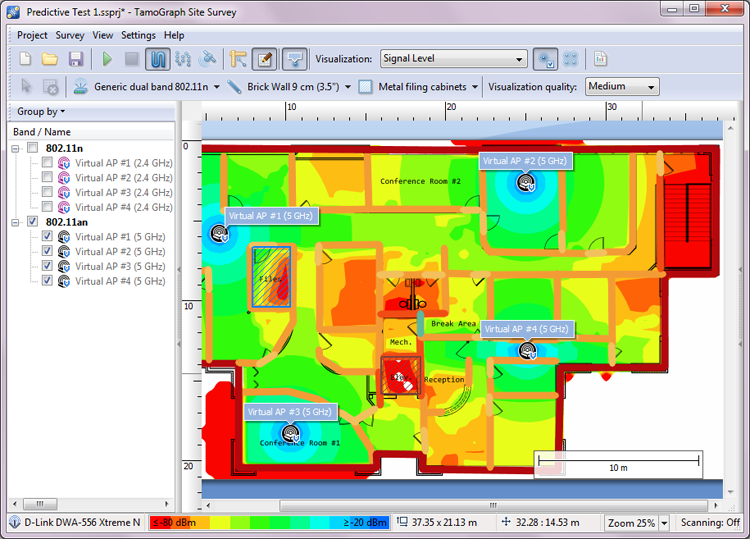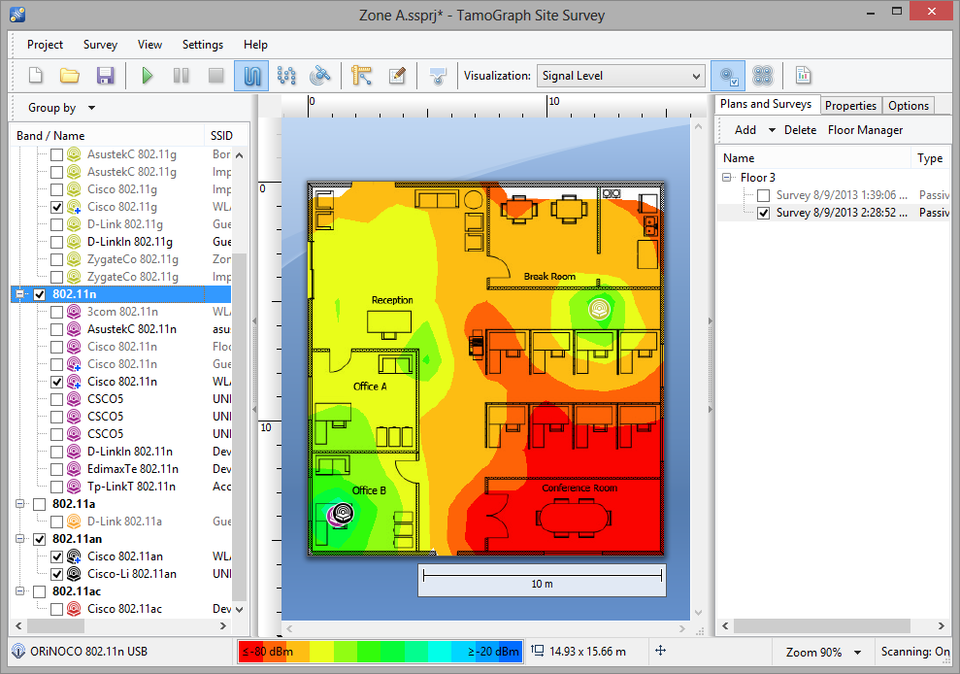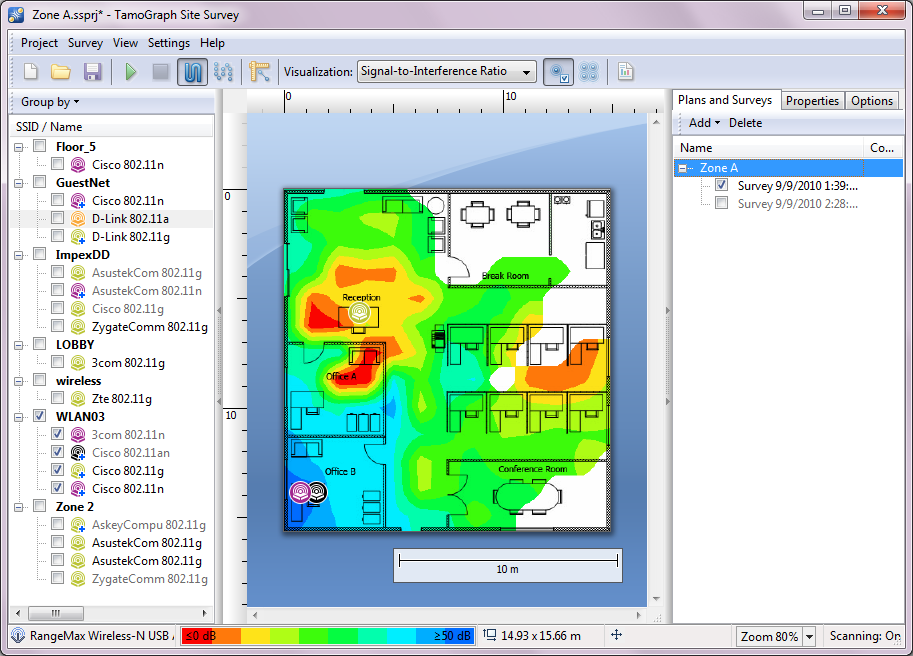WiFi Site Survey & Spectrum Analysis
WiFi site survey and RF spectrum analysis are the most important tasks to perform when it comes to designing or troubleshooting a WiFi Network. A WiFi Spectrum Analyzer allows engineers to carefully analyze the RF spectrum in order to avoid RF interferences. Cordless phones, microwave ovens, wireless motion detectors and video cameras typically operate at the same frequency space as Wi-Fi devices. Interference is one of the primary contributors to degraded Wi-Fi performance and reliability, causing bad connections, dropped VoIP calls, and unhappy users.
Pre-deployment surveys
At this stage, a site survey is necessary in order to verify that the network plan works well in a real-world environment. Placement of temporary access points and a quick survey of the resulting WLAN characteristics allow an engineer to fine-tune AP and antennae placement, determine the optimal number and types of APs and antennae, and avoid poor coverage zones.
Post-Deployment Surveys
Once a WLAN has been deployed, a complete verification site survey is necessary to ensure that the WLAN performance and coverage meet the design requirements. At this stage, the Wi-Fi equipment placement is finalized and a site survey report should be generated so that the historical records can be accessed at any time in the future.
Regular, ongoing surveys
Maintaining high performance and coverage requires regular "check-up" surveys. New users, new equipment, site expansion, neighboring WLANs, and other factors can adversely affect your WLAN. It should be monitored on a regular basis.

Predictive WiFi Site Surveys
This type of wifi survey is called "predictive" because Wi-Fi characteristics are predicted for the virtual environment model created by the user. The process of creating and adjusting the virtual environment, selection and placement of simulated APs, and analysis of the resulting WLAN is commonly referred to as "RF planning."
To create a virtual model of the environment, the user needs to "tell" the application about the position, size, and type of the physical objects that affect radio wave propagation.
The model uses built-in or custom-designed walls, floors, attenuation areas, simulated access points, and a large selection of antenna patterns.
The site survey results will include comprehensive WLAN analysis with easy-to-understand visualization of signal level, interference, access point coverage areas, data rates, network issues, detailed information about every access point: channel, maximum data rate, vendor, encryption type, etc.

Passive WiFi Site Survey
A passive wifi site survey is performed onsite and includes collecting the most comprehensive data on the wifi environment.
It is called passive because during this type of survey the application passively listens for packets and does not attempt to connect to wifi network.
Passive wifi site surveys general functionalities include creating projects, calibrating maps or creating reports.
The data collected by a passive wifi site survey include: signal level, signal-to-noise ratio, signal-to-interference ratio, AP coverage areas, number of APs, expected PHY rate, frame format, channel bandwidth and requirements

Active WiFi Site Survey
To provide more detailed information about performance of your wifi network it is necessary to perform an active wifi site survey during which an wifi adaptor (part of the measuring gear) connects to the wifi network to collect data and measure throughput rates and other metrics.
The data collected by a passive wifi site survey include: signal level, signal-to-noise ratio, signal-to-interference ratio, AP coverage areas, number of APs, actual PHY rate, frame format, channel bandwidth, TCP upstream rate, TCP downstream rate, UDP upstream rate, UDP downstream rate, round trip time and other metrics.
Why to Perform a Wi-Fi Site Survey
In a word, wireless site surveys are necessary because radio wave propagation is difficult to predict, especially in non-open space environments. It is virtually impossible to consider all the variables that might affect the health and performance of your WLAN. Changing conditions, even something as seemingly minor as a notebook equipped with a legacy 802.11g adapter that your new employee connected to the office wireless network, might seriously affect the WLAN performance. In addition, considering the wide proliferation of wireless infrastructure, factors such as interference from nearby WLANs play a very important role. This is why regular site surveys that are conducted with a professional tool are important.
Make an enquiry

We are Tamosoft WiFi Survey Certified Partner since 2018

